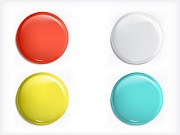38.
This temperature is of the surface of the star, the part of the star which is emitting the light that can be seen.
One way of measuring temperature occurs if an object is hot enough to visibly glow, such as a metal poker that has been left in a fire. ( ① ) The color of a glowing object is related to its temperature: as the temperature rises, the object is first red and then orange, and finally it gets white, the “hottest” color. ( ② ) The relation between temperature and the color of a glowing object is useful to astronomers. ( ③ ) The color of stars is related to their temperature, and since people cannot as yet travel the great distances to the stars and measure their temperature in a more precise way, astronomers rely on their color.
( ④ ) The interior of the star is at a much higher temperature, though it is concealed. ( ⑤ ) But the information obtained from the color of the star is still useful. [3점]
39.
But by the 1970s, psychologists realized there was no such thing as a general “creativity quotient.”
The holy grail of the first wave of creativity research was a personality test to measure general creativity ability, in the same way that IQ measured general intelligence. ( ① ) A person’s creativity score should tell us his or her creative potential in any field of endeavor, just like an IQ score is not limited to physics, math, or literature. ( ② ) Creative people aren’t creative in a general, universal way; they’re creative in a specific sphere of activity, a particular domain. ( ③ ) We don’t expect a creative scientist to also be a gifted painter. ( ④ ) A creative violinist may not be a creative conductor, and a creative conductor may not be very good at composing new works. ( ⑤ ) Psychologists now know that creativity is domain specific.
* quotient: 지수 ** holy grail: 궁극적 목표

